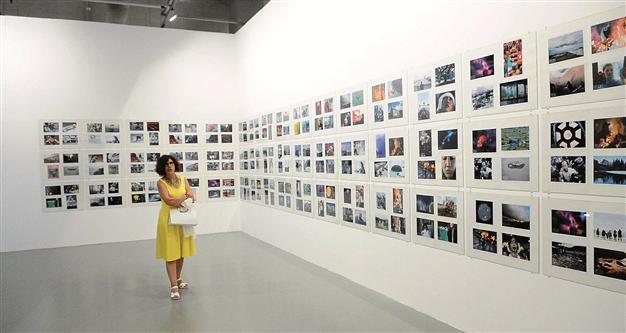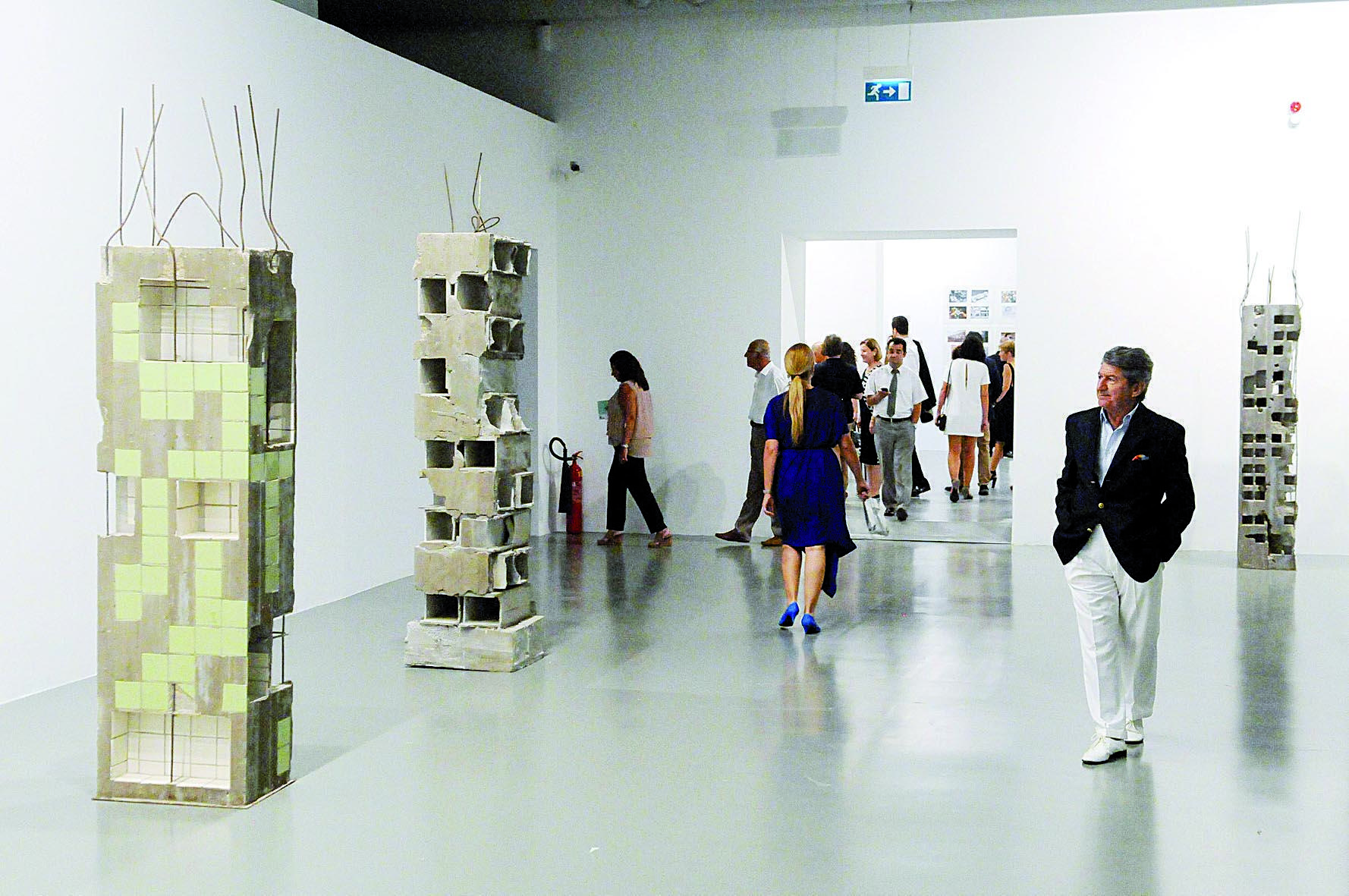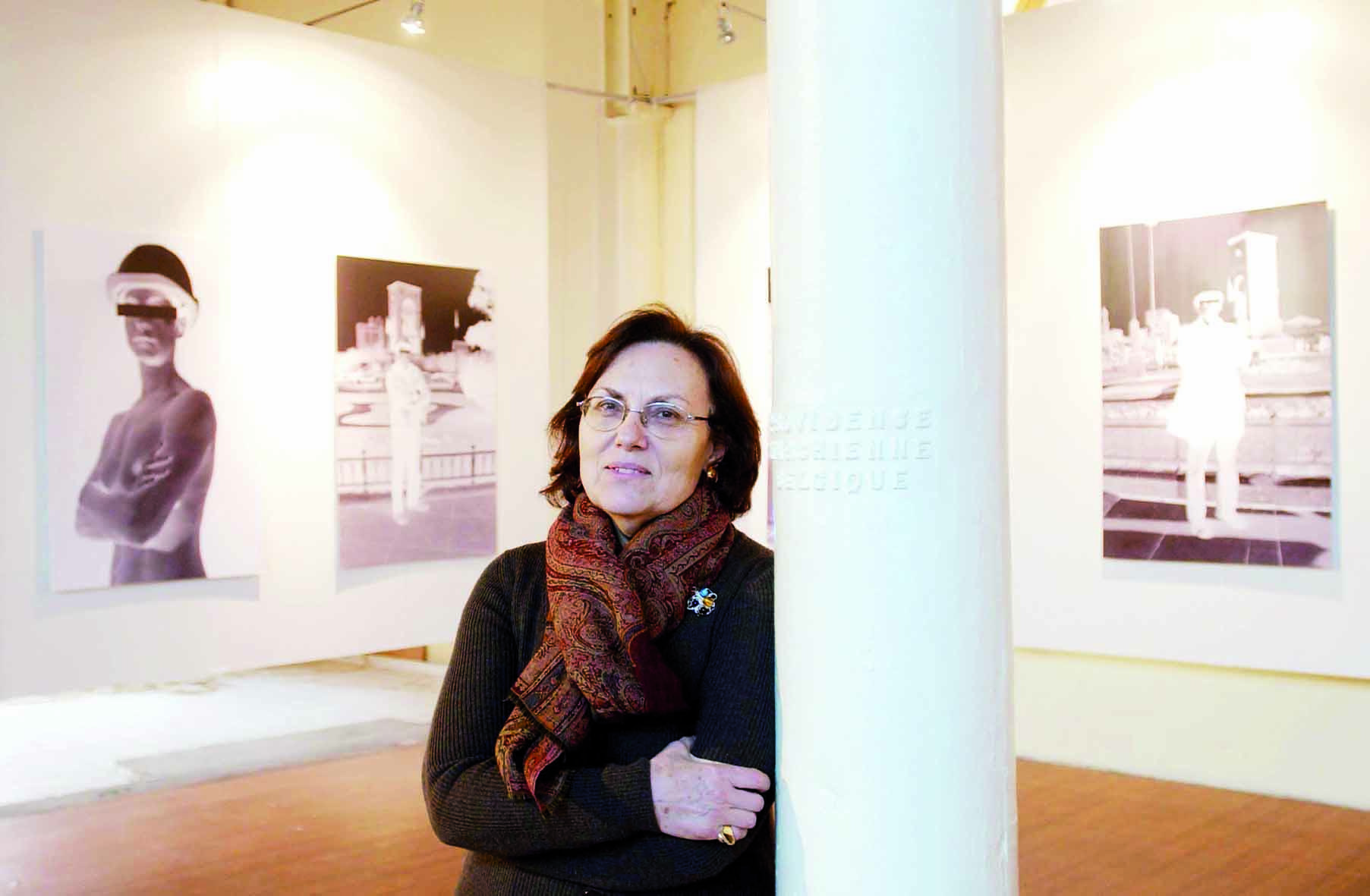What made Middle Easterners art lovers?
Sılay Sıldır - ISTANBUL

Turkey is organizing three art fairs between September and November. One of them is the Istanbul Biennial, this year organized with theme ‘Salt Water.’ DHA Photo
Social sciences fail to explain how the Middle East ranks the bottom of socio economic development index when its share in oil revenue is unrivaled. Another mystery is how the Middle East has not evolved from an authoritarian social order to a democratic one, despite the very early existence of social life (as early as 2,000 B.C.) in the region.
Today, the Middle East continues to shake expectations and debunk assumptions with its unexpected passion for art and culture: Biennials and art fairs are lined up one after the other in the region.
Turkey is organizing three art fairs between September and November. While the ongoing Istanbul Biennial coincides with the Beirut Art Fair on Sept. 17, “the art spring” starts in June with the Sharjah Biennial of the Emirates and continues with the Abu Dhabi Art Fair on Nov. 18. The region welcomes 2016 with the Marrakesh Biennial and Art Dubai.
Why is the art calendar so extraordinarily busy in this environment of turbulence?
The Middle East’s insistence on being a major actor in the art scene carries political reasons: The image of a modern state is often built by the international art events that a country hosts. This image encourages the foreign investor and presents a landscape stable and prestigious enough to invest in. Besides being a successful PR campaign for regimes, art also generates a huge economy.
World record in global art market Last year the global art market set a world record with its volume of 52 billion euros. Qatar and the United Arab Emirates are competing for foreign investors and their share in the art market. Suddenly the Qatari royal family has become the most important art buyer in the world with its $1.5 billion purchases of art works. Big auction houses of the West - Christies, Bonham, and Sotheby’s - who had already opened branches in the Middle East, continued to announce 21 percent growth in last year’s art sales despite the uneasiness in the region. As the media chases stories of violent conflicts, a cultural awakening is also rising in the Middle East.
This strange instrumentalization of art is having cultural and social benefits. The social demands in the region are being expressed as themes of the exhibited works.
The number of local galleries in the Emirates increased from 10 to 40, while editions of Art Dubai became the key element for the support of local art. Artworks are no longer only calligraphic and religious but also socially and politically more vital: Artists are expressing a cultural change following the Arab Spring.
The Emirati director of Istanbul Art International, one of the September art fairs of Turkey’s art calendar, says that in the Middle East and Asia, most galleries do more than 60 percent of their annual sales at art fairs instead of the gallery, which is vital for the survival of artists in the region.
Another Asian giant, Russia, is hosting the 6th edition of the Moscow Biennial between Sept. 22 and Oct. 1.
The curator of the biennale, Bart de Baere, also pointed to the contributions of art events in the international recognition of diverse voices and societies’ fields of resistance - even though events are sometimes used to polish the economy and achieve regimes’ political ends.
The biennial of Istanbul has helped change the image and mindset of Istanbul and integrate it into the world.
This autumn, Husseyn Bahri Alptekin will have a show at the MUHKA in Antwerp. Twenty years ago it was inconceivable that a major Turkish artist would get a retrospective in a major Western European museum.
‘Space for Turkish intellectuals’
Beral Madra, one of Turkey’s leading art critics and curators and the director of the first biennial of Turkey, said the founding of the Istanbul Biennial in 1987 similarly created a space for the Turkish intellectual - left discouraged and oppressed after the 1980 military coup.
“General Kenan Evren wanted to wash his hands through art. But he could not do so and it clearly enlarged the cultural scene,” Madra said.
She added that biennials under authoritarian regimes require considerable effort to convince progressive artists to take part and it is difficult to include oppositional artworks.
Indeed, although social criticism and politically relevant artworks sometimes find a platform in such art events, it is not without tension - especially in the Middle East.
Art Dubai’s recent editions have witnessed the removal of at least four pieces from display in advance of a visit by the ruling family to the fair. Among the removed pieces, a painting presenting the image of Egyptian soldiers in Tahrir Square beating a woman reflects the Arab Spring in the “art spring,” as well as the tension of cultural change.
Yes, the art scene is dominated by ruling elites and driven by economic forces, but politically and socially relevant works of brave artists can still mark a change in the cultural environment.


